|
Observations on Honda motorcycles in Japan by Rick Darkeall images on this website (C) rick darke |
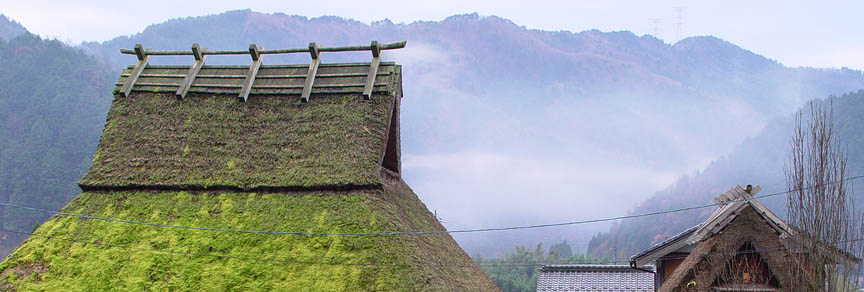 |
|
Observations on Honda motorcycles in Japan by Rick Darkeall images on this website (C) rick darke |
 |
It’s mid-morning on December 5th,
2003 and
I’m walking the narrow
streets
of a rural village
in the mountains north of 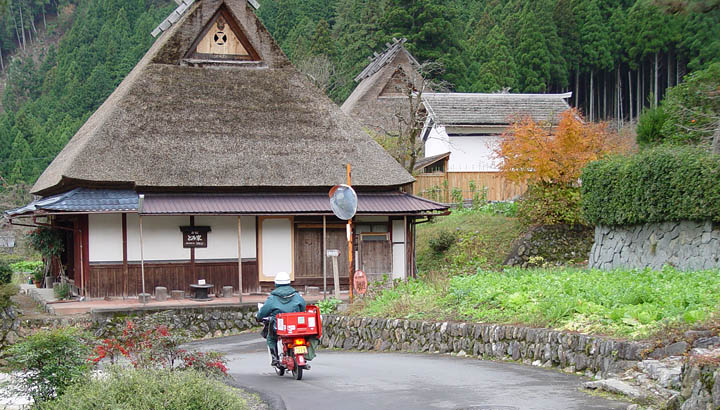 The morning mail arrives by Honda in rural Kita village in which is internationally reknowned for its surviving wealth of thatch-roofed traditional houses.
My work with
plants and landscapes has taken me to
It is surprising
to me that no significant book about Soichiro Honda (the name is
pronounced “sōh
ee-chee-dōh”) has yet been written. A true
giant in 20th Century international industry, Honda’s
founder was
apparently too interested in having fun with his inventions to be
bothered with
arranging for the type of official biography so traditional among his
peers. The nearest thing I’ve found is
Masajiro
Ikeda’s 1993 book Soichiro Honda: The
Endless Racer. Translated from
Japanese by Kazunori Nozawa, this small paperback is a bit quirky but
is well
worth reading for the insight it provides into Honda’s character. A man of exceptional vision, creativity and
stamina, Honda retained a youthful, infectious enthusiasm throughout
his life
as described in multiple recollections by Nozawa and and others who
knew him
personally. Though hard-drinking,
hard-driving
and meticulous about his machinery, his gregarious nature and
approachability
earned him virtually universal respect and admiration among employees. A well-travelled man with a broad
understanding of culture and commerce, he was savvy enough to
understand that
“Benly”, which in Japanese means “convenient”, had the familiar ring of
“Bentley” an automobile marque that was then well-known internationally
for
fine machinery. 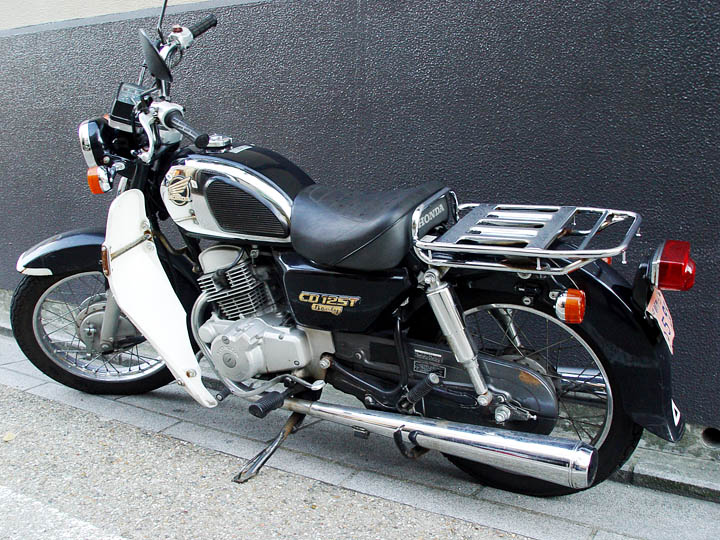 In police use in One of the personal
highlights of my most recent
The Honda
Collection Hall (visit
the English-language website, http://world.honda.com/collection-hall/
Due to time
constraints we breezed past the speedways, and with the uniquely
high-pitched
whine of multi-cylinder Honda racers permeating the outside air, we
entered the
grand entrance of the Honda Collection Hall. Constructed
of glass and stone and stainless steel, the
enormous
two-towered building is a fitting and memorable display space for
machine
design. The vast main lobby immediately hits you with a mix of historic
racing
and production motorcycles and cars, all meticulously restored both
cosmetically and mechanically. Special
exhibits and a shop brimming with literature are off to the sides. Although it was hard to decide where to turn
first, we headed for the second floor of the south tower, which is
devoted to
production motorcycles.
At home in the
States in August, I often attend the White Rose meet in 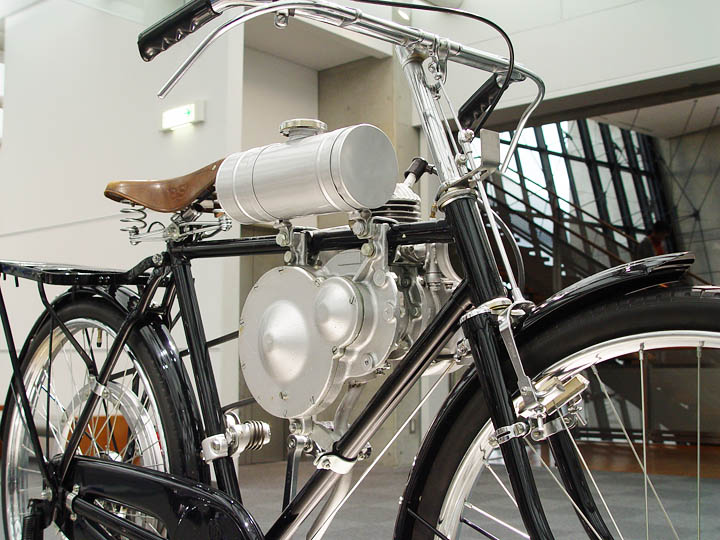 In 1946, before he officially founded Honda, Soichido Honda sold engines such as this one, rebuilt and adapted from WWII surplus military transmitting equipment A 1952 Cub F stood nearby, its brilliant red, streamlined engine case contrasting with its frisbee-like white tank. Also fitted to a bicycle frames, the Cub F greatly contributed to Honda’s growing reputation, and was innovatively marketed through a Japan-wide sales network of bicycle shops. 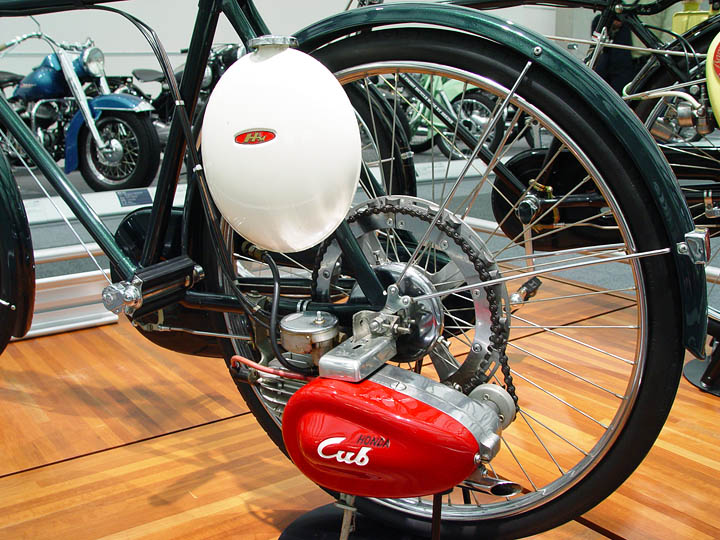 A 1952 Cub F with the classic red engine and white tank stands in front of other early models including a row of Dreams and Benlys. 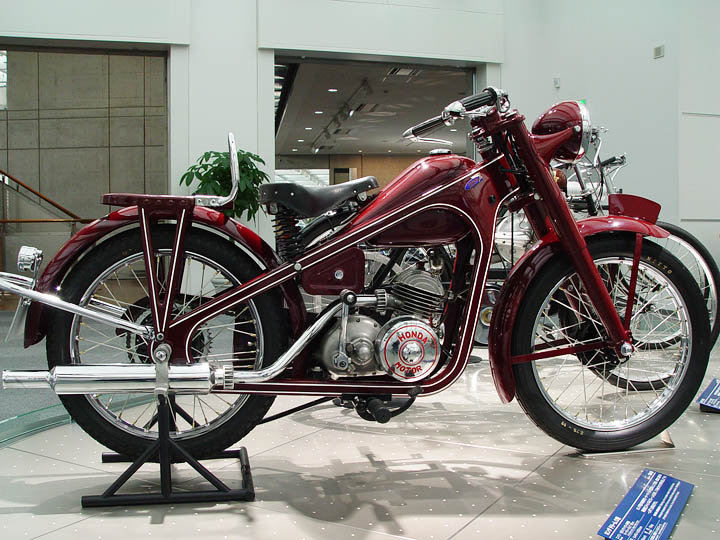 A 1949 D-type Dream in pristine restored condition represents the Honda company’s first true production motorcycle. Painted a rich burgundy-red with white pinstripes, the D’s engine is a 2-stroke design. 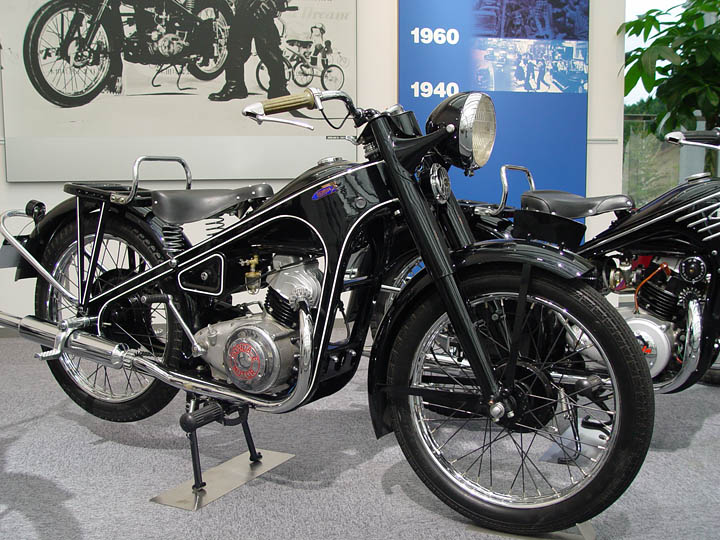 The 1951 Dream E represents Honda’s first first 4-stroke overhead valve production motorcycle. The museum’s interpretive label explains that this engine proved its durability and reliability in trial runs crossing the steep Hakone mountains in the rain. The Dream E’s little 146cc seems impossibly simple and modest compared to modern-day Hondas, but it was a critically important step in the development of many Dreams yet to come.
I’ve chased a few
Dreams on Ebay, with limited success. Most were reminders of the
well-worn but
still dependable CA160 and 305cc CA77 that were my main transportation
for a
time in high school and college years. Undoubtably
convenient, these full-bodied machines were
hardly flashy,
and I can recall looking with longing at other riders on sportier CB
models. So, while visiting in the Honda
Collection Hall nearly 30 years later, it was a small revelation to
find that
The
Collection Hall
displays a like-new example of this first Honda Super Sport to carry
the CB
appellation. While the bobbed rear fender, slender front fender, and
angular
tank make a speedy impression, the frame and forks are the same ample
pressed
steel types typical of docile CA’s. Still,
the sporty attitude of this taut little machine is
immensely
appealing.
For Vintage Honda
fans looking to find familiar favorites from the Sixties, Seventies and
Eighties,
there are plenty in evidence. I couldn’t
resist asking my friend Norio Ueda to pose by a mint condition
candy-red CB750
Four, since he’d been involved with Honda R&D when this model was
in
development. One minor disappointment
for me was the absence of one of my favorites: the CB450K1 of 1968. The
Honda
collection rotates to some extent, and although it includes the K1 it
wasn’t on
display during my visit. The CB450K1 is the first 5-speed 450 Super
Sport and
the last of Honda’s
I’ve had a long
interest in industrial design, and have always been willing to argue
that the
machinery of transportation, especially including motorcycles, often
deserves
the status of fine art. When The Art of
the Motorcycle opened in 1998 at the 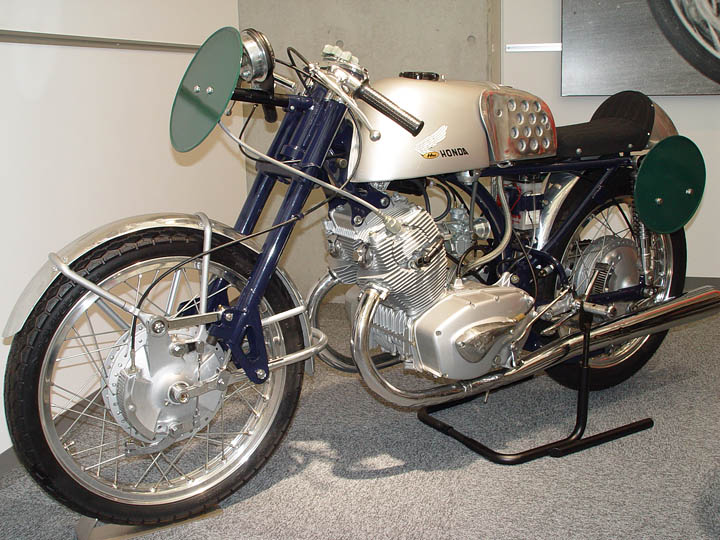 This hand-built RC71 racer competed in the 1958 Mt. Asama Clubman Race. The engine was little changed from the regular production CS71 SOHC engine. 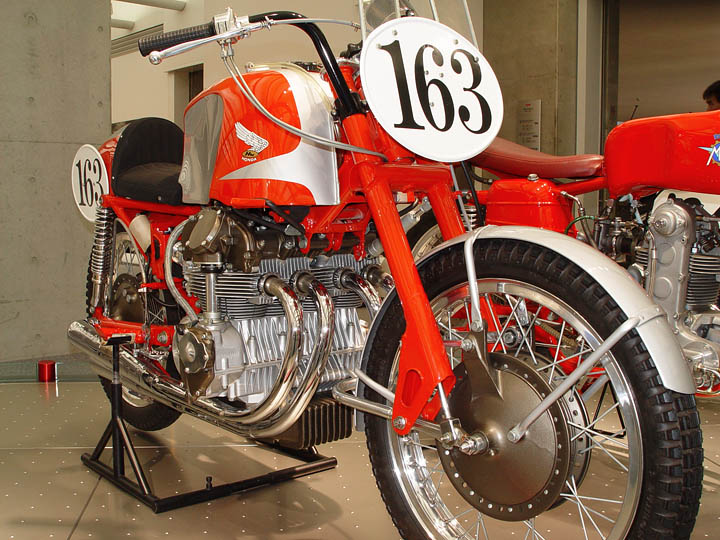 The RC160 of 1959 was Honda’s first dual overhead-cam 4-cylinder 250cc road racer. Raced in successfully in Japan that eventually proved dominant. In 1962, Honda’s DOHC 250cc RC163 won all nine races in the World Championship series. Honda was still winning in 1966, with the DOHC 250cc RC166 winning 10 out of 10 World Championship races. In addition to individually handcrafted machines such as the RC71, the Collection Hall displays most of the CR-type, limited production racers in displacements from 50cc to 125cc. Of all the racers, the RC160 of 1959 is perhaps the most distinct. The first of Honda’s 4-cylinder 250cc road racers, it is as sophisticated as any motorcycle manufactured today, and is eloquent testimony to the dream of Soichiro Honda, the Endless Racer. (adapted from Honda at Home by Rick Darke originally published in the magazine of the Vintage Japanese Motorcycle Club, North America) RETURN TO ABOUT RICK DARKE LLC |